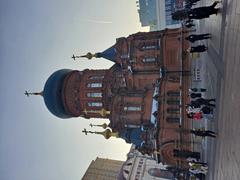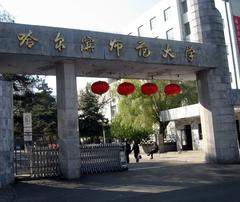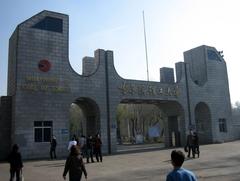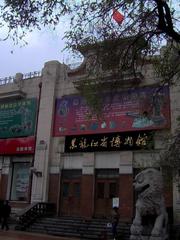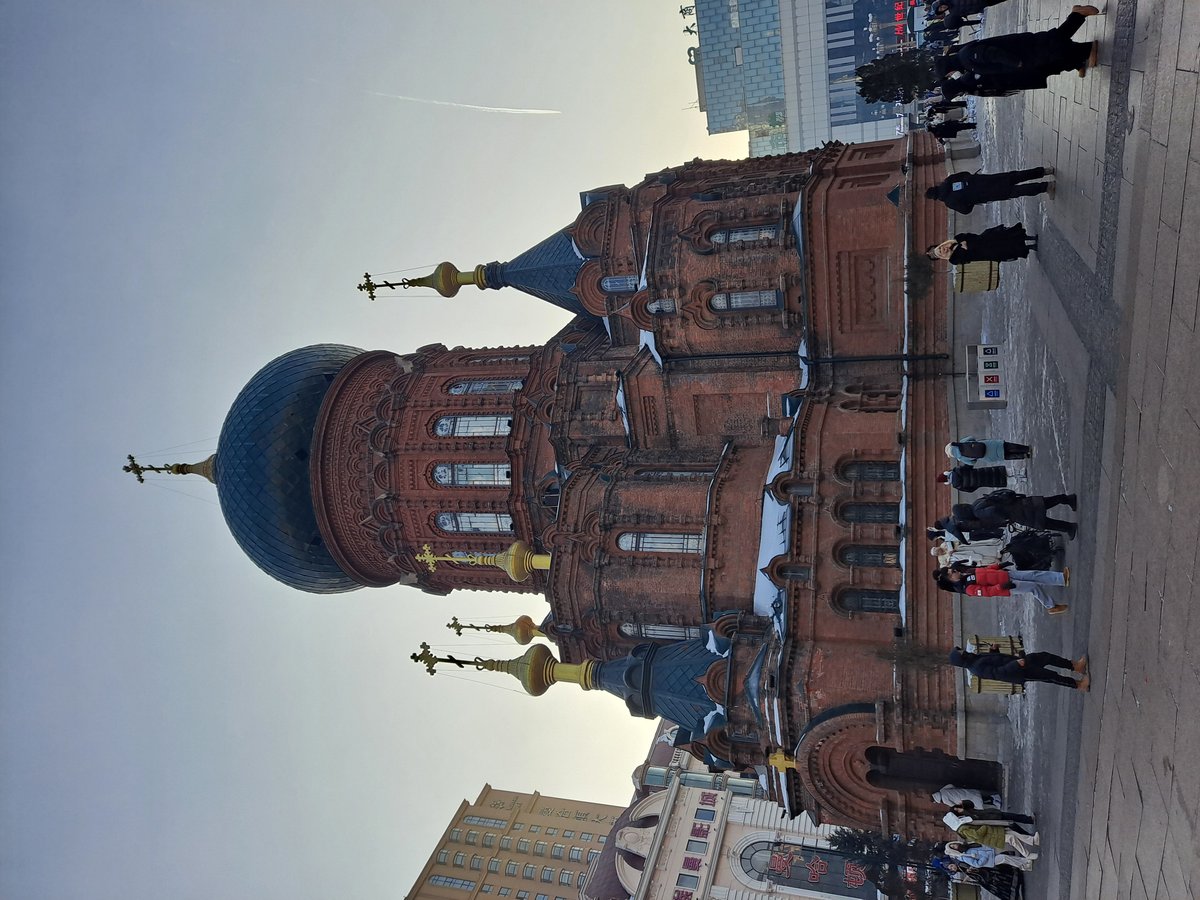
Comprehensive Guide to Visiting Xikaiyuan Erdao Street, Harbin, People’s Republic of China
Date: 19/07/2024
Introduction
西开原二道街 (Xikaiyuan Erdao Street) in Harbin, People’s Republic of China, is a unique historical and cultural destination that offers a fascinating glimpse into the city’s rich past. Harbin, founded in 1898 with the construction of the Chinese Eastern Railway by the Russian Empire, quickly grew into a melting pot of cultures, particularly Russian and Chinese influences. This historical street is a testament to Harbin’s multicultural legacy, showcasing an eclectic mix of architectural styles, including Russian Orthodox, Art Nouveau, and Baroque, that reflect the city’s diverse heritage. Over the years, 西开原二道街 has evolved from a bustling economic and cultural hub to a symbol of resilience and adaptation, surviving periods of Japanese occupation and Communist transformation. Today, it stands as a well-preserved area that attracts tourists eager to experience its rich history, stunning architecture, and vibrant local life. Whether you are a history enthusiast, an architecture aficionado, or a curious traveler, 西开原二道街 promises a rewarding and enlightening experience (Harbin - Wikipedia).
Table of Contents
- Introduction
- Early Development and Establishment
- Russian Influence and Architectural Heritage
- Economic and Cultural Hub
- Japanese Occupation and Transformation
- Post-War Era and Communist Influence
- Preservation and Modern Revival
- Notable Landmarks and Historical Sites
- Visitor Tips and Recommendations
- Cultural Significance and Legacy
- Frequently Asked Questions
- Conclusion
- Sources
Explore the Rich History and Cultural Significance of 西开原二道街 in Harbin
Early Development and Establishment
西开原二道街 has a rich history that dates back to the early 20th century. Harbin itself was founded in 1898 with the construction of the Chinese Eastern Railway by the Russian Empire. The establishment of 西开原二道街 was closely tied to this development, as the street became a significant part of the burgeoning cityscape designed to accommodate the influx of Russian and other European settlers.
Russian Influence and Architectural Heritage
The early 1900s saw a significant Russian influence on the architecture and urban planning of Harbin, including 西开原二道街. The street was designed with a blend of European styles, particularly Art Nouveau and Baroque, which were prevalent in Russia at the time. This architectural heritage is still evident today, with many buildings on 西开原二道街 showcasing ornate facades, intricate ironwork, and grandiose structures that reflect the opulence of the era.
Economic and Cultural Hub
During the early 20th century, 西开原二道街 emerged as a vital economic and cultural hub in Harbin. The street was lined with shops, cafes, and theaters, serving as a bustling center for commerce and social activities. It attracted a diverse population, including Chinese, Russians, Jews, and other ethnic groups, contributing to a vibrant multicultural atmosphere. This diversity is reflected in the variety of businesses and cultural institutions that were established along the street.
Japanese Occupation and Transformation
The history of 西开原二道街 took a dramatic turn during the Japanese occupation of Manchuria from 1931 to 1945. The street, like much of Harbin, underwent significant changes as the Japanese sought to impose their influence on the region. Many of the original Russian businesses were replaced by Japanese enterprises, and the architectural style began to incorporate more Japanese elements. Despite these changes, 西开原二道街 remained a crucial part of Harbin’s urban fabric.
Post-War Era and Communist Influence
After the end of World War II and the establishment of the People’s Republic of China in 1949, 西开原二道街 experienced further transformations. The new communist government implemented policies aimed at nationalizing businesses and redistributing property. Many of the street’s historic buildings were repurposed for government use or converted into communal housing. This period also saw the decline of some of the street’s cultural institutions as the government promoted socialist realism and discouraged Western influences.
Preservation and Modern Revival
In recent decades, there has been a renewed interest in preserving the historical and cultural heritage of 西开原二道街. Efforts have been made to restore many of the street’s historic buildings to their former glory, and the area has become a popular destination for tourists seeking to experience Harbin’s unique blend of Eastern and Western influences. The street is now home to a variety of shops, restaurants, and cultural venues that celebrate its rich history and diverse heritage.
Notable Landmarks and Historical Sites
Several notable landmarks and historical sites can be found along 西开原二道街, each with its own unique story. One such landmark is the St. Sophia Cathedral, a stunning example of Russian Orthodox architecture that has been converted into a museum. Another significant site is the Harbin Jewish New Synagogue, which serves as a testament to the once-thriving Jewish community in the area.
Visitor Tips and Recommendations
Visiting Hours and Tickets: Most landmarks on 西开原二道街, including St. Sophia Cathedral and the Harbin Jewish New Synagogue, have specific visiting hours and may require tickets for entry. It is advisable to check their official websites for the latest information on opening hours and ticket prices.
Nearby Attractions: Start your visit at the Harbin Railway Station, which is a short distance from the street and offers a glimpse into the city’s transportation history. Other nearby attractions include Zhaolin Park and the Harbin Ice Festival, held during winter.
Guided Tours and Special Events: Walking tours are highly recommended, as they allow visitors to fully appreciate the architectural details and historical context of the area. Guided tours of the St. Sophia Cathedral and the Harbin Jewish New Synagogue provide valuable insights into the cultural and religious heritage of the area.
Local Cuisine and Shopping: Visitors should take the time to explore the various shops and cafes along the street, many of which offer unique local products and traditional Harbin cuisine. Be sure to try local specialties like Harbin sausage and Russian-style pastries.
Photography Spots: 西开原二道街 is a photographer’s paradise with its stunning architecture and vibrant street scenes. Popular spots include the façade of St. Sophia Cathedral and the intricate details of the historic buildings.
Cultural Significance and Legacy
The cultural significance of 西开原二道街 extends beyond its architectural and historical value. The street is a symbol of Harbin’s multicultural past and its ability to adapt and thrive through various periods of change. It stands as a testament to the resilience and ingenuity of the city’s inhabitants, who have preserved and celebrated their diverse heritage despite numerous challenges.
Frequently Asked Questions
Q: What are the visiting hours for 西开原二道街 landmarks?
A: Visiting hours vary by landmark. It is best to check their official websites for the most accurate information.
Q: Are there any entrance fees for the historical sites?
A: Yes, some sites like the St. Sophia Cathedral and the Harbin Jewish New Synagogue may require tickets for entry. Prices can be found on their respective websites.
Q: What are some must-try local foods on 西开原二道街?
A: Be sure to try Harbin sausage, Russian-style pastries, and other traditional Harbin cuisine available at local cafes and restaurants.
Conclusion
西开原二道街 is a fascinating destination that offers a rich tapestry of history, culture, and architecture. Its story is one of resilience and adaptation, reflecting the broader narrative of Harbin itself. Whether you are a history enthusiast, an architecture aficionado, or simply a curious traveler, 西开原二道街 promises a rewarding and enlightening experience.
For more updates and travel tips, download the Audiala app and follow us on social media.
